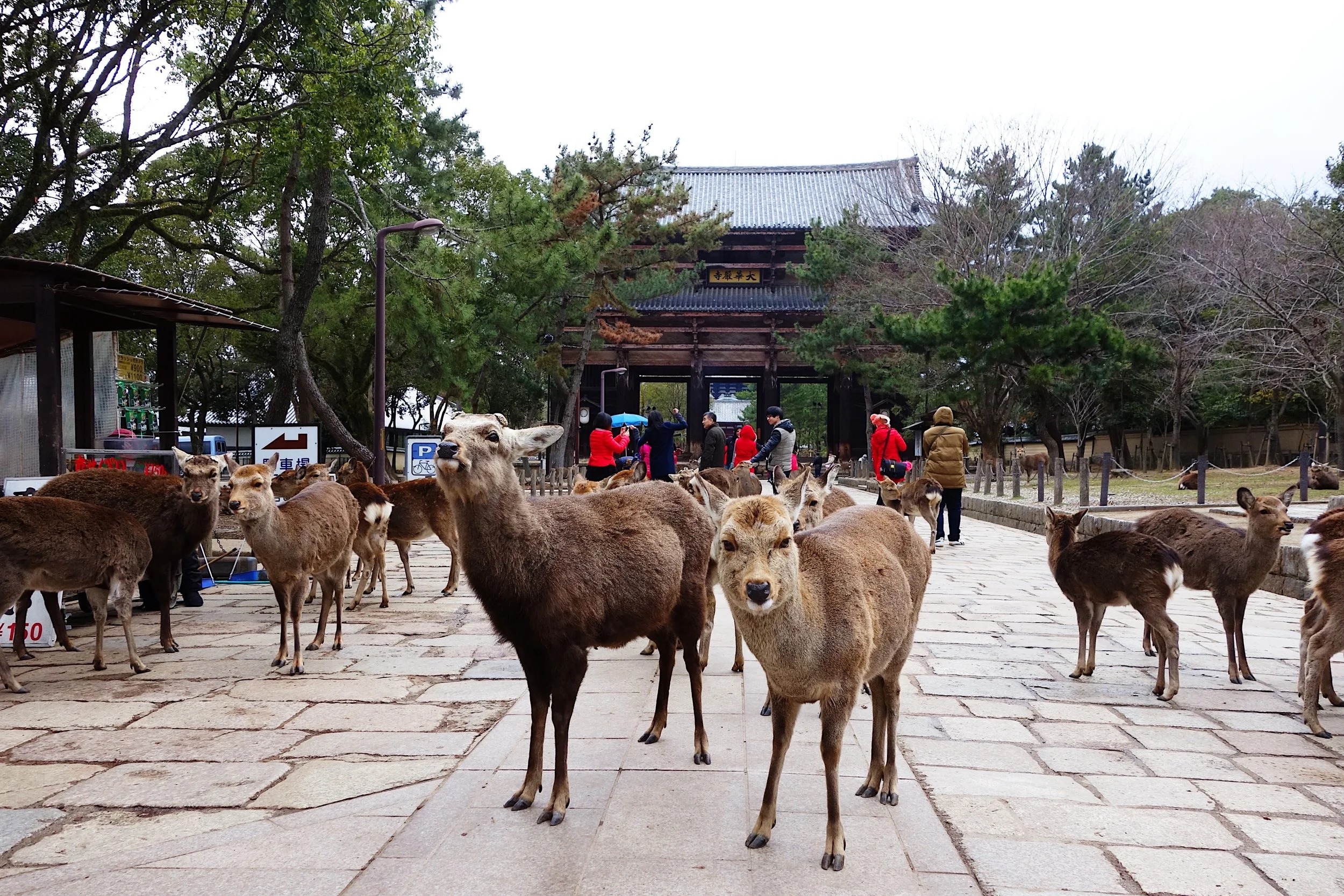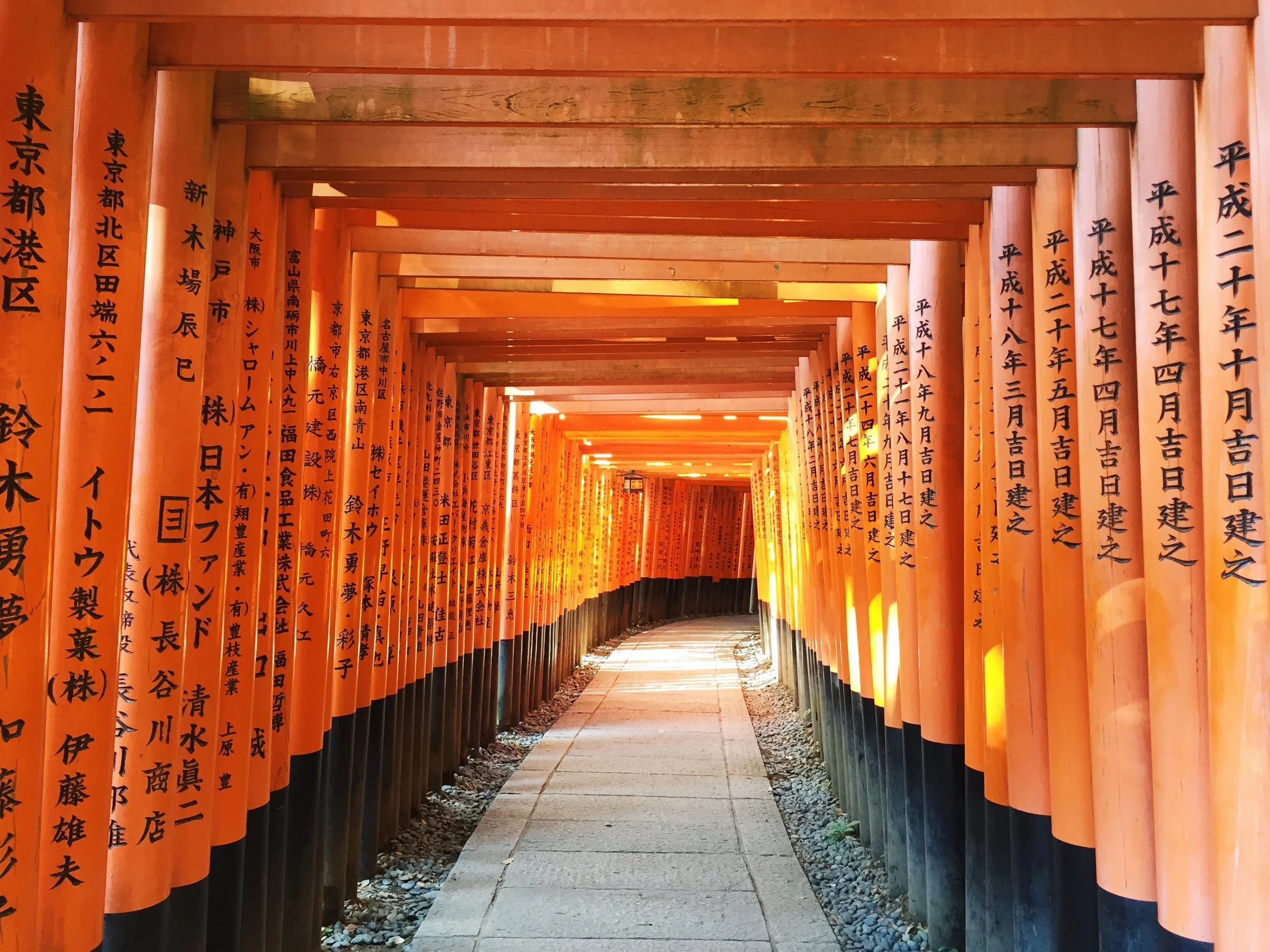Nara, Japan. December 2014.
Walking through Nara, you feel like you are the subject being studied. While most known for being the first permanent capital of Japan and having the world's largest bronze Buddha, both are slowly being overshadowed by these free roaming sika (Japanese spotted) deer. Legend has it that god of thunder Takezikamuchi arrived to Nara on a white deer to protect the newly established capital. Since then, deer have been regarded as sacred, heavenly animals protecting city and country.
The deer are tagged, accounted for, and approachable. Antlers are shaved down so they are tourist friendly and roam around freely, especially concentrated in Nara Park. Vendors sell food to feed to them so they are well fed and spoiled. Despite being tame, expect to be nudged and followed crossing Nara Park. Do not bother approaching a pack of them without having some senbei (deer crackers) ready. These guys are not messing around.




